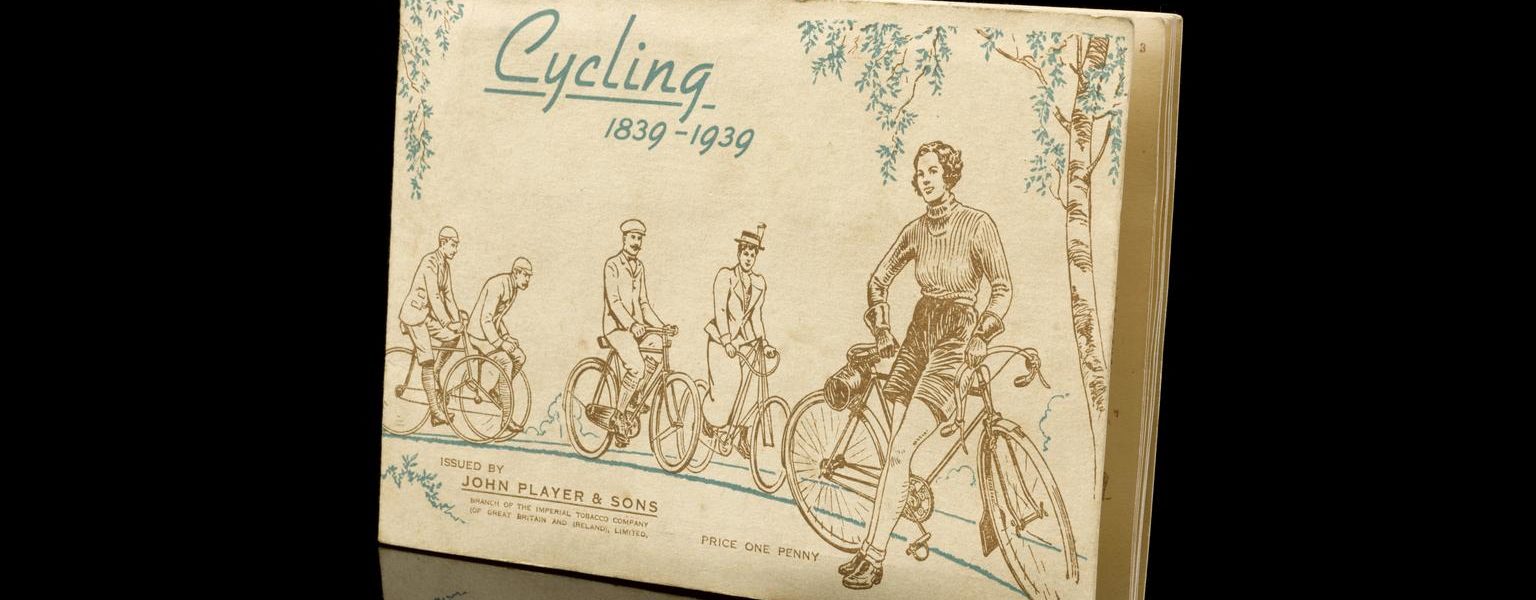Cycling has changed lives.
The invention of the Safety Bicycle, developed by Walthamstow-born John Kemp Starley, democratised travel, providing an affordable and quick mode of transport for ordinary people.
Thanks to the bicycle, new job opportunities opened up as workers were free to travel further to find work. Today, with a growing emphasis on the environment and health, the popularity of cycling continues to grow.

The modern bicycle has its origins in developments in cycling in the late 1800s, including developments such as pedal drives, tyres, and frame design. In the 1860s, the ‘boneshaker’ bicycle was developed in France and became widely around the world including in Britain.
It was the first bicycle with a pedal drive so the bicycle’s motion was powered by pedal motion rather than feet along the ground. However, ‘boneshaker’ bicycles had two different sized wheels and was an uncomfortable ride.

With the rise of mass production, advances in engineering and market competition, bicycles became affordable for millions across Europe and America. For the first time, women and the working classes could enjoy private travel and experiences previously restricted to the wealthy.
As can be seen in the cigarette cards below, there were many different types of cycling too beyond the standard ‘Safety bicycle’ including tandems, triplets, and racing bicycles.

Suffrage and bicycles
Cycling provided unprecedented mobility for men and women in the late nineteenth and early twentieth century.
In particular, the bicycle gave women the freedom to travel independently, affordably, under their own power, and a speed. Previously, women had been expected to travel predominantly on foot, in carriages, or on horseback, almost always accompanied and usually and preferably at a leisurely pace.

The ability to travel independently and affordably led to the bicycle became a symbol of women’s emancipation and contributed to the success of the campaign for women’s suffrage in Britain in the early twentieth century.
In 1908, cyclist Rose Lamartine Yates became the first woman elected to the council of the Cyclists’ Touring Club (CTC, now Cycling UK).
Nearly a year later she gave a speech “How I became a suffragist” in which she explained, “Just a year ago when speaking at a meeting of the Cyclists’ Touring Club in London…I made the statement that I was not a suffragette. It was an honest statement, yet untrue, for on looking into the matter seriously I find I have never been anything else.”
Rose Lamartine Yates’ achievements were many and numerous, from becoming the first woman elected to the CTC council (in a time when British women did not have the right to vote), to serving as a leading figure in the suffrage movement, and later to her work as a London county councillor.
Alice Hawkins, another woman active in the suffrage movement in Britain around this time, cycled around Leicester in 1911 to promote the women’s rights movement and caused outrage by being one of the first ladies to wear pantaloons in the city.
During the fight to win the vote for women or at least initially some property-owning women, the bicycle became not only a tool but also a symbol for the emancipation of women.
Sustainability, HEalth and cycling
Cycling will continue to play a part in lives for many years to come.
Cycling is an easy way to keep healthy (the benefits of cycling and other forms of exercise are well documented) and it can help protect the environment, reducing levels of carbon dioxide and toxic pollutants in the air by replacing short car journeys (two-thirds of all journeys in the UK are less than five miles).
Some bicycles are helping save lives more directly, such as the first paramedic bicycle.

Now a familiar sight for people living in large cities, the first ambulance Cycle Response Unit (CRU) was only established in the early 2000s. The idea came from former British BMX racing champion Tom Lynch MBE, who retrained as a paramedic.
As anyone who’s attempted to drive through London will know, it can be unbearably slow due to the number of vehicles on the roads. It was this that caused Tom to consider reaching an incident by bike. In 2000 the NHS agreed to trial a paramedic cycle service. In the trial’s first hour alone, Tom received and answered five calls and cancelled 5 ambulances.
Today, there are more than 120 pedalling paramedics, which collectively save the NHS approximately 6000 hours per year in ambulance time. This not only helps ease pressure on A&E departments but also saves the NHS around £1 million a year.
Sources and further reading
Cycling in Manchester, Science and Industry Museum blog, 2021
Carlton Reid, Roads Were Not Built for Cars: How Cyclists Were the First to Push for Good Roads & Became the Pioneers of Motoring (2015).
How the bicycle became a symbol of women’s emancipation by Louise Dawson, 2011:
Rose Lamartine Yates: The Cycling UK Suffragette by Sheila Hanlon, 2018:
The Role of the Bicycle in the Suffragette Movement by Bonnie Friend, 2018:
Waltham Forest London Borough of Culture 2019: Our Environment – Cycling [pdf] (2019).
